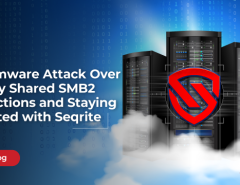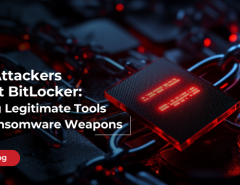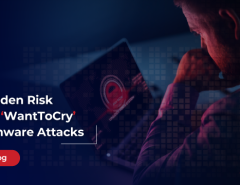Malware/ransomware attacks continue to affect the cyberspace with several critical sectors impacted in the worst possible manner. Cyber threats and instances of hacking are also succeeding at a rapid rate. That said, it is the Government data that’s actually bearing the burnt. In most cases, the confidential Government data sets are captured and a ransom is demanded to release it. While malware is the most prominent tool for gaining unsecured access, certain cyber attackers also use social engineering techniques for infecting devices and disrupting the organizational workflow.
A recent example of ransomware attack that leveraged a minor vulnerability pertaining to the Windows OS and hit companies with all its might was the WannaCry ransomware. It also impacted various Government sectors and had global repercussions. The deafening range of the WannaCry attack needs to be analyzed for devising a concrete security solution— especially for the public sector.
Scope and scale of ransomware attacks
Let’s simplify the nature of ransomware attacks before delving deeper into the impacts and consequences. Firstly, it is important to understand that these attacks aren’t new, instead they have just evolved with each passing year. Malware-specific attacks are quite similar to the Internet worms, encountered in early 2000s with the only difference being the financially motivated perspective. Modern day ransomware attacks thrive on synchronization between the targeted nations. While a host of sectors are involved in the process, Government organizations are impacted the most, at least in terms of damage to the credibility.
Although there are many data breach laws in place, gaining access to Government data isn’t something that can be ignored. When it comes to assessing the scope of these attacks— in coherence with the legislation, ransomware is both impactful and catastrophic in its own rights. Moreover, unlike healthcare sectors where data breaches are encountered via inadvertent participants, Government-specific sectors require cohesive efforts from the cyber attackers.
Impact on Government data
In simple terms, Government data gets compromised upon encountering a ransomware attack. Although, higher authorities have exceptional security techniques in place, a malware— often sent across as an unsuspecting entity— can cause a lot of damage. Moreover, every Government framework has a massive database that shelters confidential information about citizens. This includes highly sensitive personal details including biometrics. A cyber-attack on this data can cause some serious unrest. Ransomware attacks take complete control over the systems. Attackers, upon entering the server, immediately change the decryption keys; making it impossible to recover consumer details.
Government data spans across defense, politics and almost everything that makes sense to a nation’s economy. Therefore, a malware or rather a ransomware attack can have major implications on the safety, security and privacy concerns of the residents. Much like the 6-month long cyber-attack initiated by the Sofacy Group on the German Parliament, similar inadequacies can be used for crippling the legislative frameworks, therefore impacting individuals and political scenarios. Just imagine a country’s sensitive data being hacked which then is used for manipulating public sentiments and creating chaos.
Why Government data is under threat?
Despite having some of the skilled technicians, Government data sets are often compromised. When it comes to a ransomware attack, the redundancy of the concerned gadgets and operating software can play a pivotal role in amplifying the situation. Bureaucrats tend to emphasize less on the security awareness and therefore even an insignificant flaw within the operating system can lead to a full-fledged attack. It is advisable that Government organizations start training employees regarding dynamic security standards which focus on vigilance and implementations.
The simple logic behind a Government-specific ransomware attack is that if the data sets specially the critical ones, are compromised, a sizeable ransom will be demanded. Further, attackers can save a copy of the confidential information for blackmailing the users in general. Practically speaking, it isn’t possible to change the biometric and personal details of every individual listed within the database. Therefore, the best way to negate a malware or ransomware attack is to stay vigilant and opt for preventive measure rather than dealing with the after-effects.
As an IT security partner for your business, Seqrite provides comprehensive endpoint security from advanced cyber threats. To know more, visit our website or




